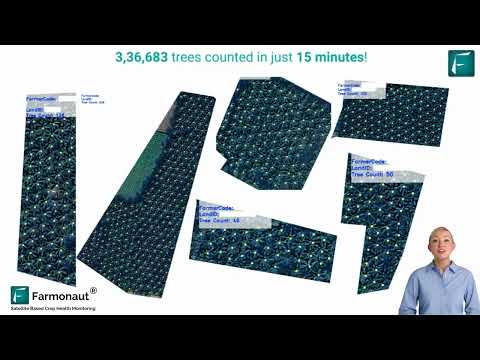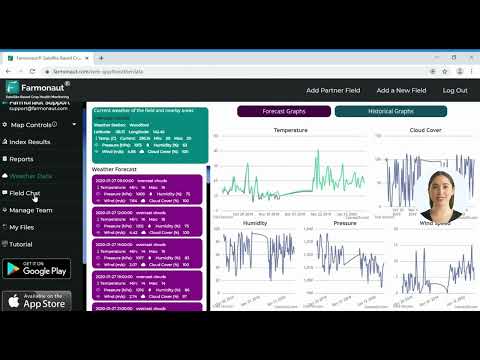Global Aviation MRO Industry: Soaring Growth and Investment Opportunities in Scottsdale
“The acquired MRO company employs over 6,000 people across 38 primary locations worldwide.”
In the ever-evolving landscape of global aviation, we are witnessing a significant shift that promises to reshape the future of the Maintenance, Repair, and Overhaul (MRO) industry. The recent acquisition of StandardAero by The Carlyle Group marks a pivotal moment in the aerospace investment sector, highlighting the growing importance of MRO services in the aviation industry. This strategic move not only underscores the value of specialized aviation expertise but also sets the stage for enhanced service offerings and expanded global reach in the MRO sector.
The Carlyle Group’s Strategic Acquisition: A Game-Changer for Aviation MRO
The Carlyle Group, a global investment firm with deep roots in private equity, has finalized its purchase of StandardAero from Veritas Capital. This transaction is more than just a change in ownership; it represents a significant investment in the future of aviation maintenance services. StandardAero, with its rich history and extensive network of over 6,000 employees across 38 primary locations worldwide, stands as a testament to the robust growth and potential of the MRO industry.
Adam J. Palmer, Managing Director and Global Head of Aerospace, Defense and Government Services for The Carlyle Group, expressed enthusiasm about the acquisition, stating, “StandardAero has established itself as one of the true leaders in the MRO industry. We are excited to partner with the StandardAero team to continue supporting the Company’s growth and industry leadership.”

StandardAero: A Century of Excellence in Aviation Services
StandardAero’s journey in the aviation industry is nothing short of remarkable. With a legacy spanning over a century, the company has consistently demonstrated its commitment to innovation and excellence in aircraft repair and overhaul services. Their comprehensive range of services includes:
- Engine maintenance
- Airframe repair
- Component overhaul
- Engineering services
- Interior completions
- Paint applications
This diverse portfolio positions StandardAero as a one-stop solution for various aviation segments, including commercial, military, and general aviation. The company’s ability to cater to a wide array of customers in business and general aviation, airline, military, helicopter, components, and energy markets showcases its versatility and industry-wide relevance.
The Carlyle Group: Driving Investment in Aerospace and Defense
As a global investment firm with $216 billion of assets under management (as of December 31, 2018), The Carlyle Group brings substantial financial muscle and strategic acumen to the table. Their expertise spans four business segments:
- Corporate Private Equity
- Real Assets
- Global Credit
- Investment Solutions
With a workforce of over 1,650 people across 31 offices on six continents, The Carlyle Group’s global presence aligns perfectly with StandardAero’s international footprint. This synergy is expected to fuel growth and drive innovation in aviation technology solutions and engineering services.
The Impact on the Global Aviation MRO Industry
“Global aviation MRO industry sees major acquisition, highlighting growth in a sector with 3 key segments: commercial, military, and general aviation.”
The acquisition of StandardAero by The Carlyle Group is set to have far-reaching implications for the global aviation MRO industry. Here’s how this strategic move is likely to shape the sector:
1. Enhanced Service Offerings
With The Carlyle Group’s investment and expertise, StandardAero is poised to expand its service portfolio. This could mean the introduction of cutting-edge technologies in aircraft repair and maintenance, potentially revolutionizing how MRO services are delivered across the industry.
2. Global Expansion
The combined global reach of both entities presents opportunities for StandardAero to extend its services to new markets. This expansion could lead to increased accessibility of high-quality MRO services worldwide, benefiting airlines and aircraft operators across various regions.
3. Innovation in Aviation Technology
The influx of capital and strategic guidance from The Carlyle Group is likely to accelerate innovation in aviation technology solutions. This could include advancements in predictive maintenance, AI-driven diagnostics, and other cutting-edge technologies that enhance the efficiency and reliability of aircraft maintenance.
4. Strengthened Market Position
The acquisition solidifies StandardAero’s position as a leading independent MRO provider. This strengthened market position could lead to increased competitiveness and potentially reshape the landscape of the global MRO industry.

Global Aviation MRO Industry Overview
| MRO Segment | Market Size (USD Billions) | Growth Rate (%) | Key Players | Investment Opportunities |
|---|---|---|---|---|
| Engine | 35.0 | 4.5 | GE Aviation, Rolls-Royce, Pratt & Whitney | Advanced materials, Predictive maintenance technologies |
| Airframe | 25.5 | 3.8 | Boeing Global Services, Airbus, StandardAero | Composite repair technologies, Automated inspection systems |
| Component | 20.0 | 5.2 | Honeywell, Collins Aerospace, Safran | 3D printing for spare parts, IoT-enabled components |
| Line Maintenance | 15.5 | 3.5 | Lufthansa Technik, AFI KLM E&M, SR Technics | Mobile MRO solutions, Augmented reality for maintenance |
| Modifications | 5.0 | 6.0 | ST Engineering, AAR Corp, AerSale | Cabin upgrades, Avionics modernization |
This comprehensive overview of the global aviation MRO industry highlights the diverse segments within the sector and their respective growth potentials. As we can see, each segment offers unique investment opportunities, from advanced materials in engine maintenance to IoT-enabled components and augmented reality solutions in line maintenance.
The Role of Technology in Shaping the Future of Aviation MRO
As we delve deeper into the implications of this significant acquisition, it’s crucial to understand the pivotal role that technology plays in shaping the future of aviation MRO. The industry is on the cusp of a technological revolution, with innovations that promise to enhance efficiency, reduce downtime, and improve overall safety in aircraft maintenance.
Artificial Intelligence and Machine Learning
AI and machine learning are set to transform predictive maintenance in the aviation industry. These technologies can analyze vast amounts of data from aircraft sensors to predict potential failures before they occur, allowing for proactive maintenance and reducing unscheduled downtime.
While this video focuses on AI in agriculture, the principles of leveraging artificial intelligence for predictive analysis and efficiency improvements are equally applicable to the aviation MRO industry. The adoption of AI in MRO operations could lead to significant cost savings and improved aircraft reliability.
Internet of Things (IoT) in Aviation
The Internet of Things is revolutionizing how aircraft are monitored and maintained. IoT sensors can provide real-time data on various aircraft components, enabling more accurate and timely maintenance decisions. This technology is particularly valuable for engine monitoring and component health tracking.
Augmented Reality (AR) in Maintenance Procedures
AR technology is making inroads into aircraft maintenance procedures. Technicians can use AR glasses to access real-time information, step-by-step repair instructions, and expert guidance remotely. This not only improves the accuracy of repairs but also reduces the time required for complex maintenance tasks.
3D Printing for Spare Parts
Additive manufacturing, or 3D printing, is poised to revolutionize the spare parts supply chain in the aviation MRO industry. This technology allows for on-demand production of certain components, reducing inventory costs and minimizing aircraft downtime due to part unavailability.
Investment Opportunities in the Aviation MRO Sector
The acquisition of StandardAero by The Carlyle Group underscores the attractive investment opportunities present in the aviation MRO sector. Here are some key areas that investors might consider:
- Technology Startups: Companies developing innovative solutions for predictive maintenance, AI-driven diagnostics, or AR applications for maintenance procedures.
- Specialized MRO Providers: Firms focusing on niche areas such as engine overhaul, avionics upgrades, or composite material repairs.
- Training and Simulation: As the industry adopts new technologies, there’s a growing need for advanced training solutions, including VR and AR-based training programs for maintenance technicians.
- Sustainable Aviation Solutions: With the increasing focus on sustainability, companies developing eco-friendly MRO practices or solutions for reducing aviation’s carbon footprint present interesting investment opportunities.
Investors looking to capitalize on these opportunities should consider factors such as regulatory compliance, technological expertise, and the ability to scale operations globally.
The Impact of Global Events on Aviation MRO
The aviation MRO industry, like many others, is susceptible to global events and economic fluctuations. The recent global pandemic, for instance, had a significant impact on the sector, leading to reduced flight hours and, consequently, changes in maintenance schedules. However, it also accelerated the adoption of certain technologies, such as remote inspection capabilities and digital collaboration tools.
As the industry recovers and adapts to new realities, we’re likely to see:
- Increased focus on flexibility in MRO operations
- Greater emphasis on cost-effective solutions
- Accelerated adoption of digital technologies
- Growing importance of sustainable practices in aircraft maintenance
These trends present both challenges and opportunities for MRO providers and investors alike.
The Role of Regulatory Bodies in Shaping the MRO Landscape
Regulatory bodies play a crucial role in shaping the aviation MRO industry. Organizations such as the Federal Aviation Administration (FAA) in the United States and the European Union Aviation Safety Agency (EASA) set stringent standards for aircraft maintenance and repair. As technologies evolve, these regulatory bodies must adapt their guidelines to ensure safety while allowing for innovation.
Investors and MRO providers must stay abreast of regulatory changes and ensure compliance across all operations. This regulatory landscape also presents opportunities for companies that can develop solutions to help MRO providers meet and exceed regulatory requirements efficiently.
The Future of Aviation MRO: Trends to Watch
As we look to the future of the aviation MRO industry, several trends are likely to shape its evolution:
- Digitalization of MRO Operations: The shift towards digital workflows, paperless maintenance records, and integrated data systems will continue to accelerate.
- Green MRO Practices: Sustainability will become increasingly important, with a focus on reducing waste, using eco-friendly materials, and minimizing the environmental impact of MRO operations.
- Predictive Maintenance: The use of big data analytics and AI for predictive maintenance will become more sophisticated, leading to more accurate forecasting of maintenance needs.
- Robotics in MRO: The use of robots for inspection and certain maintenance tasks is likely to increase, improving efficiency and reducing human error.
- Blockchain for Supply Chain Management: Blockchain technology could revolutionize parts tracking and authentication in the MRO supply chain.
While this video showcases Farmonaut’s milestones in the agricultural sector, it illustrates how technological advancements and data-driven approaches can transform traditional industries. The aviation MRO sector is poised for similar transformative changes, leveraging data analytics and AI to enhance operational efficiency and service quality.
The Importance of Skilled Workforce in Aviation MRO
As the aviation MRO industry embraces advanced technologies, the demand for a highly skilled workforce continues to grow. MRO providers and investors must prioritize training and development to ensure that technicians and engineers are equipped to work with the latest technologies and comply with evolving regulatory standards.
This focus on skills development presents opportunities for:
- Specialized training programs and institutions
- Partnerships between MRO providers and educational institutions
- Development of advanced simulation and training technologies
Investing in human capital will be crucial for the long-term success and sustainability of MRO operations in an increasingly technology-driven industry.
The Role of Data Analytics in Aviation MRO
Data analytics is becoming increasingly central to the aviation MRO industry. By leveraging big data, MRO providers can:
- Optimize maintenance schedules
- Improve inventory management
- Enhance overall operational efficiency
- Provide more accurate cost estimates for maintenance projects
The ability to harness and analyze vast amounts of data from various sources, including aircraft sensors, maintenance records, and historical performance data, is opening up new possibilities for predictive and prescriptive maintenance strategies.
This video demonstrates the power of satellite and AI-based automated detection in agriculture. Similar technologies are being adapted for use in aviation MRO, particularly for aircraft inspection and damage assessment. The ability to quickly and accurately identify issues using advanced imaging and AI analysis can significantly reduce maintenance times and improve safety.
Global Expansion and Market Opportunities
The acquisition of StandardAero by The Carlyle Group opens up possibilities for global expansion in the aviation MRO market. Key regions to watch include:
- Asia-Pacific: With rapidly growing aviation markets in countries like China and India, this region presents significant opportunities for MRO providers.
- Middle East: Known for its strategic location and investment in aviation infrastructure, the Middle East continues to be a hub for MRO services.
- Latin America: An emerging market with growing demand for both commercial and general aviation services.
Expanding into these markets requires careful consideration of local regulations, workforce availability, and cultural factors. However, the potential for growth makes these regions attractive for strategic investments in the MRO sector.
The Importance of Partnerships and Collaborations
In the evolving landscape of aviation MRO, partnerships and collaborations are becoming increasingly important. These can take various forms:
- Collaborations between MRO providers and OEMs (Original Equipment Manufacturers)
- Partnerships between MRO companies and technology providers
- Joint ventures to enter new markets or develop specialized capabilities
Such partnerships can lead to innovation, cost efficiencies, and improved service offerings, ultimately benefiting the entire aviation ecosystem.
The Role of Cybersecurity in Aviation MRO
As the aviation MRO industry becomes more digitalized, cybersecurity emerges as a critical concern. Protecting sensitive data, ensuring the integrity of maintenance records, and safeguarding against potential cyber threats are paramount. Investors and MRO providers must prioritize robust cybersecurity measures to protect their operations and maintain trust in the industry.
Conclusion: A Bright Future for Aviation MRO
The acquisition of StandardAero by The Carlyle Group marks a significant milestone in the evolution of the global aviation MRO industry. It underscores the sector’s growth potential and the increasing importance of specialized aviation expertise in today’s market. As we look to the future, we see an industry poised for transformation, driven by technological advancements, changing market dynamics, and a focus on efficiency and sustainability.
For investors, the aviation MRO sector presents a wealth of opportunities, from technology startups to established providers expanding their global footprint. The key to success will lie in understanding the intricate interplay of factors shaping the industry, from regulatory requirements to technological innovations and global market trends.
As we navigate this exciting period of growth and change in the aviation MRO industry, one thing is clear: the sky is not the limit; it’s just the beginning.
FAQ Section
Q: What does MRO stand for in aviation?
A: MRO stands for Maintenance, Repair, and Overhaul. It encompasses all the activities required to keep aircraft in airworthy condition.
Q: How big is the global aviation MRO market?
A: The global aviation MRO market is estimated to be worth over $80 billion annually, with projections for continued growth in the coming years.
Q: What are the main segments of the aviation MRO industry?
A: The main segments include Engine Maintenance, Airframe Maintenance, Component Maintenance, and Line Maintenance.
Q: How is technology changing the aviation MRO industry?
A: Technology is revolutionizing the MRO industry through innovations like predictive maintenance, AI-driven diagnostics, augmented reality for maintenance procedures, and 3D printing for spare parts.
Q: What are the key challenges facing the aviation MRO industry?
A: Key challenges include keeping pace with technological advancements, managing regulatory compliance, addressing skilled labor shortages, and adapting to changing market dynamics.
Q: How does the acquisition of StandardAero by The Carlyle Group impact the MRO industry?
A: This acquisition is expected to drive growth and innovation in the MRO sector, potentially leading to enhanced service offerings, expanded global reach, and accelerated adoption of advanced technologies.
Earn With Farmonaut: Affiliate Program
Earn 20% recurring commission with Farmonaut’s affiliate program by sharing your promo code and helping farmers save 10%. Onboard 10 Elite farmers monthly to earn a minimum of $148,000 annually—start now and grow your income!
For developers interested in integrating satellite and weather data into their applications, check out Farmonaut’s API. For detailed documentation, visit our API Developer Docs.
While this video showcases Farmonaut’s web app for satellite-based crop monitoring, it illustrates the power of remote sensing and data analysis in modern industries. Similar principles of satellite imagery and data interpretation are increasingly being applied in the aviation sector for aircraft inspection and maintenance planning.





















